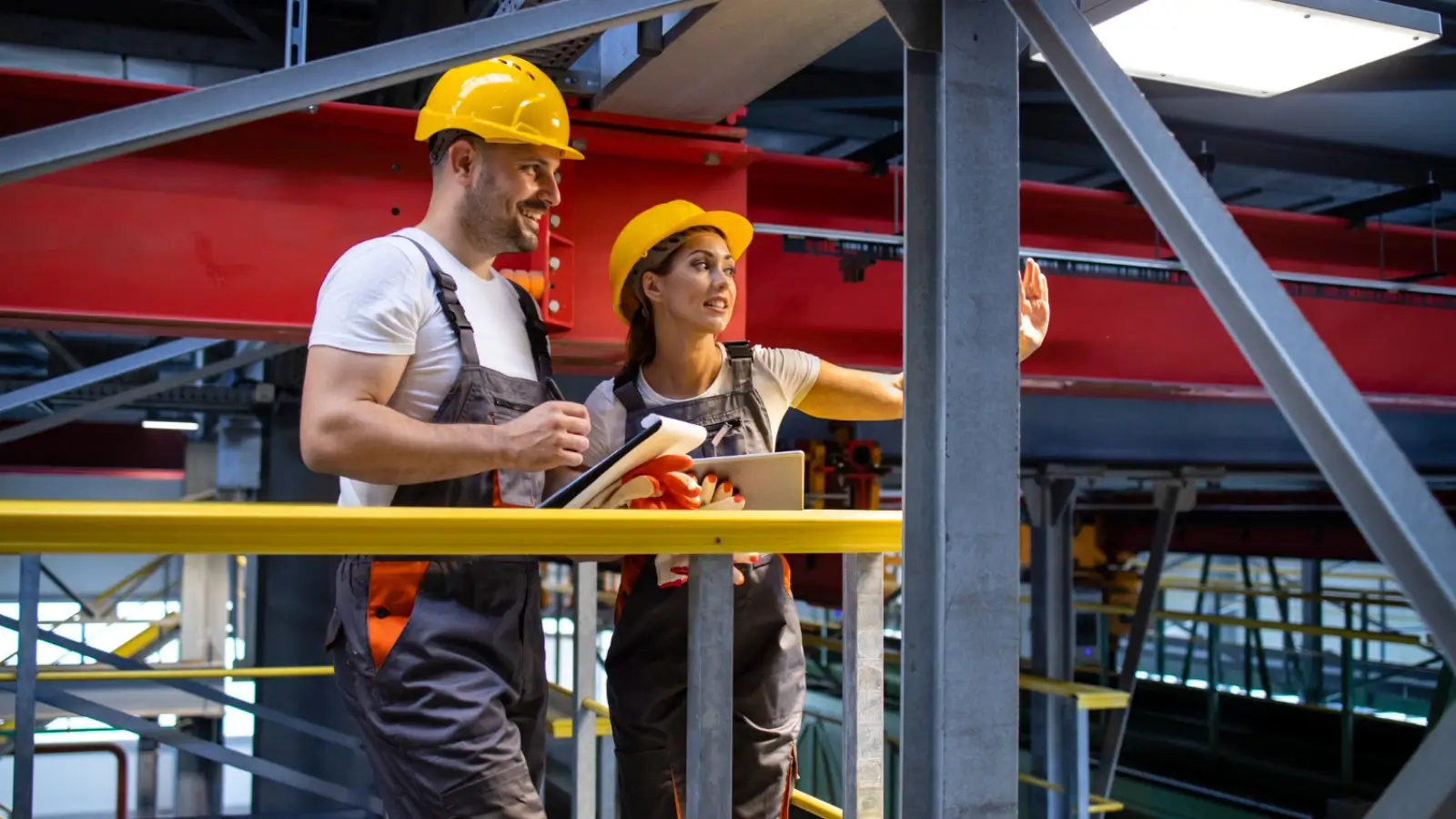


The concept of engineered fall protection can seem abstract, a world of load calculations, standards, and blueprints. But its true value is seen in the real world, where these systems solve complex, dangerous, and often unique challenges. A system in a food processing plant will look nothing like one on a stadium roof.
The genius of an engineered solution is its ability to be custom-tailored to a specific task, environment, and workflow. By looking at a few real-world case studies, we can see how these systems are not just "products," but holistic solutions that integrate directly into a facility's operations.
The Challenge: A heavy manufacturing plant operates multiple 50-ton overhead cranes. These cranes require frequent electrical and mechanical maintenance on their bridge-mounted motors and drive shafts, 40 feet above a floor cluttered with multi-million dollar machinery.
The Hazard: The crane bridge itself is the work platform, but it's narrow, has no guardrails, and is a high-fatality-risk area. Using a boom lift from the floor is often impossible due to the machinery below.
The Engineered Solution: The partner firm designed a horizontal lifeline system mounted directly to the crane's own structural bridge. This is a highly complex engineering challenge. The engineer had to analyze the crane's structure to ensure it could withstand the massive horizontal forces of a fall arrest without compromising the crane's own integrity.
The Result: Maintenance technicians now connect to the lifeline with a self-retracting lifeline (SRL) before they even step onto the bridge. They have 100% tie-off and can walk the entire 80-foot length of the crane, with their anchor point moving with them. The system provides complete safety without ever interfering with the plant's operations on the floor below.
The Challenge: A large-scale bakery needs to clean and access the inside of massive, 15-foot-tall stainless steel mixing vats. The floors are constantly wet, and the environment has strict sanitation requirements.
The Hazard: Workers were using rolling ladders on wet floors, a clear recipe for disaster. Any system installed must be food-grade and not introduce contaminants.
The Engineered Solution: This required a multi-faceted engineered fall protection approach.
Active Protection: For standalone vats where a platform wasn't feasible, a floor-mounted rotating jib-arm system was installed. This system, also in stainless steel, provides a 360-degree overhead anchor point. A worker connects to it with an SRL, allowing them to lean over the edge of the vat to clean it, but the system arrests them immediately if they slip.
The Result: The facility is now 100% compliant, and the solution is built to withstand the high-pressure, caustic wash-downs required for sanitation.
The Challenge: A large university has over 50 buildings, many with flat roofs covered in HVAC units, vents, and pipes. Maintenance staff were accessing these areas frequently, protected only by a "warning line" system, which is a low-level administrative control.
The Hazard: Dozens of unprotected roof edges, skylights, and trip hazards. The sheer number of hazards made a "one-off" solution impossible to manage.
The Engineered Solution: The engineering partner performed a campus-wide fall hazard assessment. They prioritized the roofs based on hazard severity and foot traffic.
Low-Traffic Roofs: Received a perimeter-mounted horizontal lifeline system. This engineered fall protection system allows workers to tie off and work in "travel restraint," meaning their lanyard is short enough to prevent them from ever reaching the roof's edge.
The Result: The university now has a standardized, manageable, and compliant safety program across its entire campus. The use of passive guardrails where possible has dramatically reduced the training burden, as the system protects everyone without them needing to take any action.
These cases show that engineered fall protection is a problem-solving discipline. It starts with the task, analyzes the environment, and delivers a solution that fits the workflow, not the other way around.